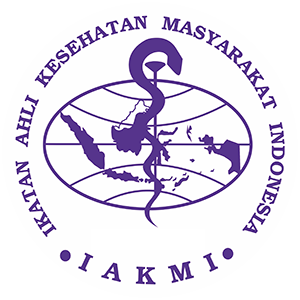THE EFFECT OF THE APPLICATION OF THE UPRIGHT POSITION ON DURATION TIME DELIVERY
DOI:
https://doi.org/10.30787/gaster.v20i2.790Keywords:
Upright Position, Duration of DeliveryAbstract
Background:Childbirth is a natural process in a woman's life cycle. The care given should also return to the body's physiology. The upright position is considered a position that helps the fetus decline faster, but so far there are still mothers who lie down during childbirth. Research objective:This study aims to determine the effect of the application of the upright position on the time of delivery in women giving birth in PMB, Pringsewu Regency. Method: This study uses a quasi-experimental design with a non-equivalent group pre-post test. The research subjects were mothers who gave birth normally in PMB Pringsewu Regency. The sample of this research is. The inclusion criteria in this study were normal mothers who were willing to be respondents in PMB Pringsewu Regency. Research analysis using Independent T test. Results ; showed that the first stage of time in the control group was 7.53 ± 0.84 hours, while the first stage of time in the intervention group was 4.85 ± 0.62. The second stage of time in the control group was 50.38 ± 6.24 minutes, while the second stage of the intervention group was shorter at 32.53 ± 5.30 minutes. The results of the statistical test showed that there was a significant difference so that there was an effect of applying the upright position to the length of time in the active phase of the first stage of labor and the second stage of labor in women giving birth at PMB Pringsewu (p value = 0.000). The application of an upright position in maternity makes the duration of labor faster than the lying positionReferences
Berta, M. et al. (2019) ‘Effect of maternal birth positions on duration of second stage of labor : systematic review and meta-analysis’, 0, pp. 1–8.
Brocklehurst, P. (2017) ‘Upright versus lying down position in second stage of labour in nulliparous women with low dose epidural : BUMPES randomised controlled trial’, The BMJ, 2017(359), pp. 1–15. doi: 10.1136/bmj.j4471.
Creswell, J. (2016) Research design pendekatan kualitatif, kuantitatif dan mixed. Yogyakarta: Pustaka Pelajar.
Dabral, A. et al. (2018) ‘Upright kneeling position during second stage of labor : a pilot study’, 7(2), pp. 401–407.
Dinkes Lampung. (2020) Profil Kesehatan Provinsi Lampung tahun 2019. Bandar Lampung.
Gizzo, S. et al. (2014) ‘Women ’ s Choice of Positions during Labour : Return to the Past or a Modern Way to Give Birth ? A Cohort Study in Italy’, 2014.
Gupta, J. et al. (2017) ‘Position in the second stage of labour for women without epidural anaesthesia ( Review )’, Cochrane Database of Systematic Reviews, (5). doi: 10.1002/14651858.CD002006.pub4.www.cochranelibrary.com.
Kemenkes RI. (2017) Survey Demografi Kesehatan Indonesia. Jakarta.
Kemenkes RI (2019) Asuhan Persalinan Normal. Jakarta: JNPKR.
Kemenkes RI (2021) Profil Kesehatan Indonesia Tahun 2020, Kemenkes RI,. Jakarta.
King, T. L. et al. (2019) Varney’s Midwifery. Burilington: World Headquarters Jones & Bartlett Learning.
Ministry of Health of the Republic of Indonesia (2017) Indonesian Health Demographic Survey 2017. Jakarta: Badan Pusat Statistik.
Mohamed, A., Emam, M. and Al-zahrani, A. E. (2018) ‘Upright versus recumbent position during first stage of labor among primipara women on labor outcomes’, 8(7), pp. 113–124. doi: 10.5430/jnep.v8n7p113.
Mselle, L. T. and Eustace, L. (2020) ‘Why do women assume a supine position when giving birth ? The perceptions and experiences of postnatal mothers and nurse-midwives in Tanzania’, BMC Pregnancy and Childbirth, 20(36), pp. 1–10.
Okonta, P. (2012) ‘Birthing Positions : Awareness And Preferences Of’, The Internet Journal of Gynecology and Obstetrics, 16(1), pp. 1–5.
Soviyati, E. (2016) ‘Factors Related Duration Of Labor In RSUD ’45 Kuningan West Java 2015’, Jurnal Bidan “Midwife Journalâ€, 2(1), pp. 33–43.
Sugiyono (2017) Statistika Untuk Penelitian. Bandung: CV Alfa Beta.
Syaflindawati, Herman, R. B. and Ilyas, J. (2015) ‘Pengaruh Upright Position Terhadap Lama Kala I Fase Aktif pada Primigravida’, Jurnal Kesehatan Andalas, 4(3), pp. 957–961.
Syaifuddin (2017) Ilmu Kebidanan. Jakarta: Yayasan Bina Pustaka Sarwono Prawiroharjo.
Thilagavathy, G. (2012) ‘Maternal Birthing Position And Outcome Of Labor’, The Journal of Family Welfare, 58(1), pp. 68–73.
Üzerine, T. et al. (2018) ‘Childbirth Types : A Meta-Analysis Doğum Eyleminin 1 . Evresinde Anneye Uygulanan Dik Pozisyonların Doğum’, Clinical and Experimental Health sciences, pp. 128–137. doi: 10.5152/clinexphealthsci.2017.435.
Walker, K. et al. (2018) ‘Maternal position in the second stage of labour for women with epidural anaesthesia ( Review )’, Cochrane Database of Systematic Reviews Surgical, 2018(11). doi: 10.1002/14651858.CD008070.pub4.www.cochranelibrary.com.
WHO (2018) WHO Recommendations Intrapartum care for a positive childbirth experience. Available at: http://apps.who.int/iris/bitstream/10665/260178/1/9789241550215-eng.pdf?ua=1%0Ahttp://www.who.int/reproductivehealth/publications/intrapartum-care-guidelines/en/.













